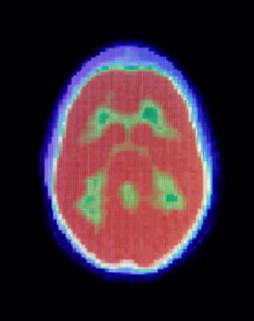In an article published in the American Chemical Society’s Medicinal Chemistry Letters journal, scientists have reported advancement towards a potential imaging agent for early diagnosis of Alzheimer’s disease.
 18F-Labeled Phenyldiazenyl Benzothiazole for in Vivo Imaging of Neurofibrillary Tangles in Alzheimer’s Disease Brains. Credit: iStock
18F-Labeled Phenyldiazenyl Benzothiazole for in Vivo Imaging of Neurofibrillary Tangles in Alzheimer’s Disease Brains. Credit: iStock
Alzheimer’s disease is taking a heavy toll of life in the elderly population. Accurate diagnosis or laboratory tests do not exist till now and presence of the disease can only be confirmed after the death of the patient. Present diagnosis of Alzheimer’s disease is based on the patient’s symptoms and medical history. But, symptoms such as memory loss are also related to the normal aging process.
For diagnosis of Alzheimer’s disease, an autopsy of the brain samples is performed. The samples are examined for presence of any protein tangles or clumps that typically occur due to this disease.
Masahiro Ono and other scientists who took part in the research stated that for diagnosis of AD there are presently no proven medical scans or laboratory tests. In the report, they have explained about the lab testing and synthesis of FPPDB, a novel imaging agent. In samples of the human brain, the imaging agent demonstrated the capability to bind itself tightly to neurofibrillary tangles and ß-amyloid plaques. These plaques and tangles are symptoms of Alzheimer’s disease. The imaging agent, FPPDB, was tested in laboratory mice, where it stayed in the mice’s body for a duration long enough for performing a PET scan.
The scientists added that the imaging agent can be developed further for diagnosis of Alzheimer’s disease in its early stages in humans. The study’s authors have acknowledged receipt of funds from the Ministry of Education, Culture, Sports, Science and Technology, Japan and the Japan Society for the Promotion of Science.